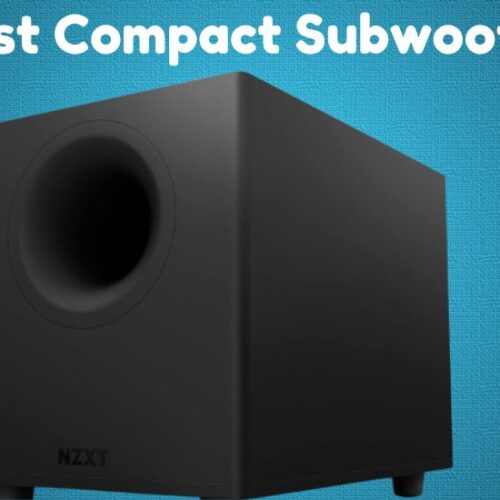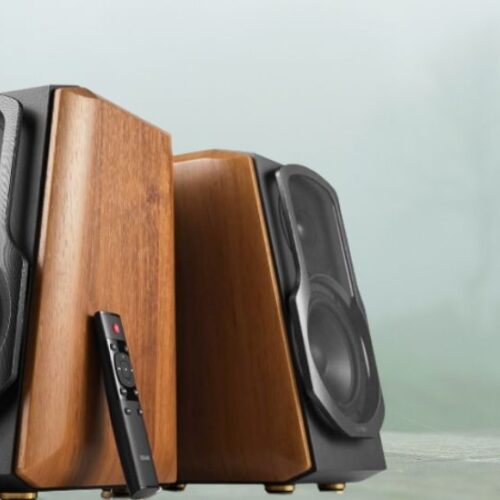In the realm of audio systems, understanding subwoofer power handling is crucial for enthusiasts and professionals alike. This comprehensive guide dives deep into the nuances of subwoofer power and how it intertwines with amplifier capabilities. Whether you’re setting up a home theater or fine-tuning your car audio system, grasping these concepts ensures optimal performance and prevents potential damage. But what keeps these powerful beasts in check? Enter the often-overlooked hero: subwoofer power handling guide.
Subwoofer Power Handling: Picture this – you’re cranking up your favorite bass-heavy track and suddenly hear a dreaded pop. That’s the sound of a subwoofer pushed beyond its limits. Subwoofer power handling is the unsung hero that ensures your beloved bass machine can handle the power thrown at it without sacrificing performance or longevity.
Significance of Matching Subwoofers and Amplifiers: Now, imagine this – you’ve got a Ferrari engine in a Volkswagen Beetle. Sounds cool, right? Well, not when it comes to audio. Matching your subwoofer’s power handling capabilities with those of your amplifier is crucial for optimal performance. It’s like finding the perfect dance partner – they need to be in sync to create magic on the dance floor (or in this case, your living room).
Overview of Key Terms:
Now, let’s break down the jargon:
- RMS (Root Mean Square): Think of this as the steady heartbeat of your subwoofer. It measures the continuous power handling capacity, giving you a reliable indicator of its performance under normal conditions.
- Impedance: Have you ever heard of a traffic jam for electrical signals? That’s impedance. It’s the subwoofer’s resistance to the amplifier’s power flow. Understanding impedance ensures a smooth ride for your audio signals.
- Watt: Like horsepower in cars, watts tell you how much power your subwoofer can handle or dish out. It’s the muscle behind the thump.
- Voice Coil: This is the engine under the hood of your subwoofer. It’s what converts electrical signals into the physical motion of the speaker cone, creating those bone-rattling vibrations. Different voice coil configurations can tweak the performance of your subwoofer, so it’s like choosing between turbocharged or naturally aspirated for your ride.
Armed with this knowledge, you’re ready to dive deep into the world of subwoofer power handling and unleash the full potential of your audio setup. So buckle up because we’re about to take your bass game to the next level.
Subwoofer Power Handling Guide
What is a Subwoofer?
Let’s start with the powerhouse of your audio system – the subwoofer. This isn’t your average speaker; it’s the big gun responsible for delivering deep, rumbling bass notes that shake your chest and walls. Think of it as the secret sauce that adds richness and depth to your favorite tunes, movies, and games.
What is Power Handling?
Now, onto the nitty-gritty of power handling. Imagine your subwoofer as a champion weightlifter. It can lift, but only to a certain extent. Power handling is its capacity to handle the electrical load without buckling under pressure. But here’s the kicker – it’s not just about raw strength; it’s about finesse, too. Understanding the difference between RMS power (the steady, reliable force) and peak power (the occasional burst of energy) is key. It’s like knowing when to lift heavy and when to go for speed reps – both essential, but for different scenarios.
What is Amplifier?
The amplifier plays a vital role in powering subwoofers by converting electrical signals into amplified audio output. Matching the amplifier’s power output with the subwoofer’s power handling capabilities is essential for achieving balanced sound and preventing damage to both components.
Understanding Subwoofer Power
What is RMS in a subwoofer?
RMS stands for Root Mean Square, representing a subwoofer’s continuous power handling capability. It’s like the steady heartbeat of your subwoofer, indicating how much power it can handle without distortion or damage over time.
What’s the Importance of RMS Power?
RMS power is crucial for assessing a subwoofer’s true performance capability. Unlike peak power, which only reflects short bursts of power, RMS power provides a more accurate measure of a subwoofer’s sustained power handling. Matching the amplifier’s RMS output with the subwoofer’s RMS rating ensures optimal performance and prevents damage.
What is Impedance?
Impedance is the electrical resistance that the subwoofer presents to the amplifier. Measured in ohms, it influences how much power the subwoofer draws from the amplifier. Proper impedance matching ensures efficient power transfer and clean sound reproduction.
How does impedance affect a subwoofer?
Impedance, measured in ohms, plays a crucial role in a subwoofer’s performance. It determines the electrical resistance the subwoofer presents to the amplifier, affecting how much power it draws. Mismatched impedance can result in inefficient power transfer, leading to distorted or muddy sound. Proper impedance matching ensures optimal power handling and clean sound reproduction and prevents damage to both the subwoofer and amplifier, ultimately contributing to a more balanced and enjoyable audio experience.
What is a Voice Coil?
The voice coil is a crucial component of the subwoofer that is responsible for converting electrical signals into mechanical motion, driving the speaker cone to produce sound. Different voice coil designs, such as single or dual voice coils, impact the subwoofer’s impedance and power handling capability.
What are the different Types of Voice Coils?
Single voice coil subwoofers have one coil winding, while dual voice coil subwoofers have two independent coil windings. Dual voice coil subwoofers offer more flexibility in wiring configurations and impedance options. The choice of voice coil type affects the subwoofer’s power handling and performance characteristics.
Matching Subwoofers and Amplifiers
What is Power Matching?
Ensuring your subwoofers and amplifiers are well-matched is crucial for an immersive audio experience. It’s like finding the perfect dance partner – they need to be in sync to create magic on the dance floor (or, in this case, your living room).
What is the Importance of Matching?
Why does matching matter? Well, imagine trying to run a marathon with shoes two sizes too small. Ouch, right? Mismatched subwoofers and amplifiers are like that – uncomfortable and potentially damaging. Matching ensures your subwoofer sings its heart out without straining or distorting, giving you the crisp, clear sound you crave.
Methods for Matching Power Efficiently
Now, onto the juicy bit – how to match power like a pro. It’s all about balance and precision. Pay attention to the RMS ratings, impedance, and power output of both your subwoofer and amplifier. Aim for harmony, not excess. Too much power, and you risk blowing out your subwoofer. Too little, and you’re left craving more bass. It’s a delicate dance but oh-so-rewarding when you get it right.
Why is Subwoofer Efficiency Important?
Ever wonder why some subwoofers seem to pack more punch than others? That’s where subwoofer efficiency comes into play. It’s like the MPG rating of your car – the higher, the better. Understanding this efficiency factor helps you choose a subwoofer that squeezes every drop of power from your amplifier, giving you maximum bang for your buck.
What Factors Affecting Efficiency?
But wait, there’s more! Several factors can influence subwoofer efficiency. From the design of the cone to the materials used, each component plays a role in how efficiently your subwoofer converts electrical energy into earth-shaking bass. It’s like fine-tuning your engine for peak performance – attention to detail is key.
Enclosure
Last but not least, let’s talk about enclosures. No, we’re not talking about Tupperware; we’re talking about the casing that houses your subwoofer. Believe it or not, the type of enclosure can make or break your bass experience. Sealed, ported, or bandpass – each has its pros and cons. Choose wisely to ensure your subwoofer performs at its best.
Key Takeaways
In summary, here are the key points to remember about subwoofer power handling and amplifier matching:
- Subwoofer Power Handling: RMS ratings, impedance, and voice coil design impact a subwoofer’s ability to handle power efficiently.
- Amplifier Matching: Properly matching amplifier power with subwoofer RMS ratings ensures optimal performance without risking damage.
- Subwoofer Efficiency: Understanding efficiency factors helps maximize the output of your subwoofer.
- Enclosure Type: The type of enclosure affects subwoofer performance and should be chosen wisely.
Conclusion on subwoofer power handling guide
In wrapping up, let’s circle back to the heartbeat of our discussion – the subwoofer power handling guide. We’ve delved into the depths of understanding how crucial it is for your audio setup. It’s not just about pushing boundaries; it’s about preserving the integrity of your gear and unlocking its full potential.
By grasping the intricacies of subwoofer power handling, you’re not just a passive listener – you’re an empowered enthusiast ready to take your audio experience to new heights. Armed with this knowledge, you have the tools to prevent damage and optimize the performance of your subwoofer.
So, I encourage you, dear reader, to apply what you’ve learned. Take the time to match your subwoofer and amplifier properly, consider the efficiency of your subwoofer, and choose the right enclosure for your setup. In doing so, you’ll safeguard your equipment and elevate your listening experience to a new level of sonic bliss. Here’s to the power of knowledge – and the power of powerful bass.
FAQs on subwoofer power handling guide
Q: What determines how much power a subwoofer can handle?
The power handling of a subwoofer depends on factors like its RMS rating, impedance, voice coil design, construction quality, and enclosure type. Each aspect contributes to its ability to efficiently manage electrical power.
Q: Is it better to overpower or Underpower a subwoofer?
It’s generally better to avoid overpowering or underpowering a subwoofer. Overpowering risks damaging the subwoofer, while underpowering may result in inadequate performance. Matching the subwoofer’s RMS rating with the amplifier’s output ensures optimal performance without risking damage.
Q: What wattage is best for a subwoofer?
The ideal wattage for a subwoofer depends on various factors, such as the subwoofer’s power handling capability, the size of the room, and personal preferences for bass intensity. It’s best to match the subwoofer’s RMS rating with the amplifier’s output for optimal performance.
Q: How do I match my amplifier and subwoofer for optimal performance?
Match the RMS power rating of the amplifier with the RMS power handling capability of the subwoofer. Ensure impedance compatibility for efficient power transfer and clean sound.
Q: What class of amplifier is best for subwoofer?
For subwoofers, Class D amplifiers are often preferred due to their efficiency and compact size. They deliver ample power with minimal heat generation, making them ideal for driving subwoofers while conserving energy and space.









